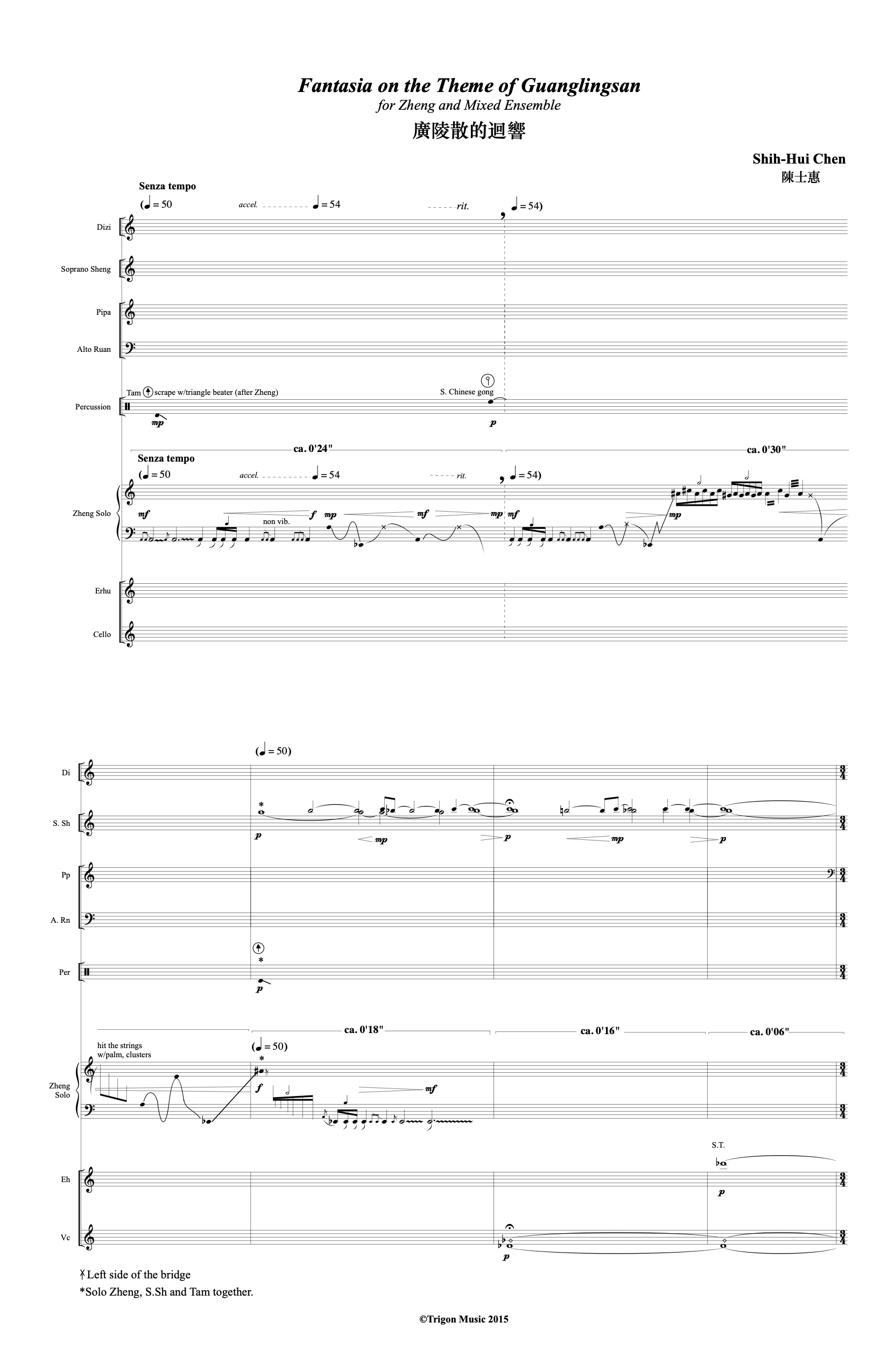Fantasia on the Theme of Guanglingsan
廣陵散的迴響
for Zheng and Chinese Orchestra (2014), ca.12’
for Zheng and mixed ensemble (2015), ca. 12’
Study Score
$90
The musical materials in this piece derive loosely from Guanglingsan, a melody popular in the Eastern Han Dynasty (25-220 A.D.) and among the most well known pieces from the classical repertoire. Although originally performed on guqin, it also became an important work for zheng later on. Despite the tragic content of its narrative—Guanglingsan tells a story of revenge, that of a sword craftsman's son during the Warring States Period (475-221 BC)—the two distinct emotions and styles presented in the melody made a deep impression on me. The meditative character in the melody’s opening and ending provide a strong contrast to the fast, energetic music flanked within. Together, they suggest a rich, full range of musical expression and vitality.
The structure of the Fantasia, therefore, echoes this original melody with the slow-paced opening (subtly introduced in a fragmented way), while the faster middle section invokes a warrior-like spirit. The rich and elegant Guanglingsan melody is most apparent in the final section where the longer and more lyrical melody is presented in a contrapuntal manner. Furthermore, it is worth mention that, unlike my previous works that utilize only strict notation, Fantasia employs some graphic notation/improvisations for the soloist and the orchestra to allow freer and more effective expression on the traditional Chinese instruments.
The original version for the Fantasia on the Theme of Guanglingsan was written for the Chinese orchestra and commissioned by the Taipei Chinese Orchestra for the final round of the 2015 TCO International Conducting Competition. The chamber ensemble version was premiered by the members of the Little Giant Chinese Orchestra.
<廣陵散的迴響> 是為古箏與國樂團所譜的曲,音樂素材來自中國十大古曲之一 <廣陵散>。這首在東漢就已經流行的旋律,除了是古琴名曲之外,也常見於古箏的演奏。廣陵散敘述的是戰國時,一個鑄劍工匠之子報恩復仇的悲劇,曲調中兩種截然不同的情緒和風格:情韻深遠及沛武精神,含括了豐富完整的音樂性。
就曲式結構來說,<廣陵散的迴響> 跟原曲相似: 有沈思緩慢的開始 —— 這時曲調只有動機點綴、輕輕暗示 —— 然後進入了雄偉的快板中段,最後,完整悠長的廣陵散旋律,以複音的方式結束整曲。此外,為了使傳統樂器能夠發揮特色,在部份曲譜上刻意採用自由、即興記譜法,給予演奏者一個較寬廣的空間 。除此國樂團的版本之外,本曲另有一首室內樂版。





